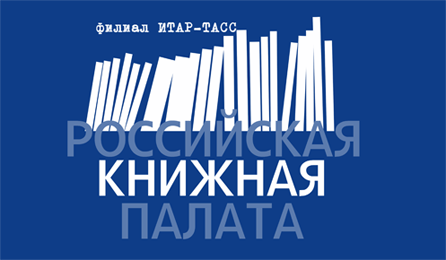Smirnova A.A., Smirnov I.P., Tkachenko A.A. Geographical approach to the classification of local rural areas (on the example of the Torzhok district in the Tver Region) // The Russian Peasant Studies. 2023. V.8. №1. P. 85-103.
DOI: 10.22394/2500-1809-2023-8-1-85-103
Annotation
The article continues the series of works on the geographical diversity of rural areas. The previous article (Tkachenko et al., 2021) presented a classification of rural districts in the Tver Region. This article aims at providing a classification of rural areas that are more fractional than municipal districts and at assessing the compliance (consistency) of classifications for the adjacent territorial levels. The Torzhok district was chosen as a main case for it represents the most prosperous type of districts in the Tver Region — agricultural, with a developed network of rural settlements. Based on the same characteristics as in the previous study, 22 local rural areas were considered as rural municipalities until 2017. The resulting classification includes 11 types, 6 of which have only one representative each. The grouping by the degree of compliance with the features of the Torzhok district showed that the general portrait of the district depends on a small number of local areas that form its spatial-semantic core: only 3 local rural areas located around the district center have the same characteristics. On the periphery, there are territories either with a low degree of correspondence or without any similar characteristics. The comparison of classifications proved the role of generalization in the study of spatial differences in rural areas.
Keywords
Countryside, local rural areas, frame structure, territorial functions, rural settlement, recreational potential, Tver Region, Torzhok district.
About the author
Smirnova Alexandra A., PhD (Geography), Associate Professor, Faculty of Geography and Geoecology, Tver State University. P. Proshina St., 3, bldg. 2, Tver, 170021.
E-mail: This email address is being protected from spambots. You need JavaScript enabled to view it.
Smirnov Ilya P., PhD (Geography), Associate Professor, Faculty of Geography and Geoecology, Tver State University. P. Proshina St., 3, bldg. 2, Tver, 170021.
E-mail: This email address is being protected from spambots. You need JavaScript enabled to view it.
Tkachenko Alexander A., DSc (Geography), Professor, Faculty of Geography and Geoecology, Tver State University. P. Proshina St., 3, bldg. 2, Tver, 170021.
E-mail: This email address is being protected from spambots. You need JavaScript enabled to view it.
Light, water and playgrounds: Local initiatives in the Tver Region as reflecting the territorial challenges
Jul 24 2020Smirnova A.A. Light, water and playgrounds: Local initiatives in the Tver Region as reflecting the territorial challenges // The Russian Peasant Studies. 2020. V.5. №2. P. 151-158.
DOI: 10.22394/2500-1809-2020-5-2-151-158
Annotation
The author continues the study of the Local Initiatives Support Program in the Tver Region, which was started in 2016. Based on the rural settlements’ participation in this Program from 2013 to 2018, the author drew a map and made conclusions about the rural population activity. However, according to the field data, rural residents rarely propose projects; therefore, the map presents rather the activity of local administrations. The article focuses on contradictions and difficulties in the implementation of local projects in different municipalities. The survey and expert interviews in the municipalities of the Tver Region showed that the general idea of the Program differs from the results of its regional implementation for participation in the Program was very difficult for many municipalities due to bureaucratic obstacles. The proper application and achievement of the required results including involvement of local communities were as difficult for many administrations as ensuring the project information support which was one of the necessary conditions for getting a regional subsidy. Moreover, there are differences in the directions of the rural development compared to the European LEADER approach: LEADER projects usually do not focus on the infrastructural development and aim primarily at the small business development, preserving the cultural heritage and increasing the tourist attractiveness of rural settlements.
Keywords
Local Initiative Support Program, Tver Region, local initiatives, rural areas, activity of the rural population, rural development, LEADER approach
About the author
Smirnova Alexandra A., PhD (Geography), Assistant Professor, Tver State University. Zhelyabova St., 33, Tver, 170100.
E-mail: This email address is being protected from spambots. You need JavaScript enabled to view it.
The spatial structure of kinship (on the example of the Zharkovsky settlement of the Tver Region)
Aug 07 2019Alekseev A.I., Efimova O.Yu., Tkachenko A.A. The spatial structure of kinship (on the example of the Zharkovsky settlement of the Tver Region) // The Russian Peasant Studies. 2019. V.4. №2. P. 128-137.
DOI: 10.22394/2500-1809-2019-4-2-128-137
Annotation
The article considers the spatial structure of relationships of families in the peripheral settlement Zharkovsky (3 thousand inhabitants) with their children and relatives in other cities and villages. There are 180 members in 90 surveyed families of the village that has been losing population for the last 50 years, and its “diaspora” has spread from Dublin to Vladivostok and from Murmansk to Amman. The children of Zharkovsky’s residents are mostly students in two nearest regional centers—Tver and Smolensk, and also in Moscow and Saint Petersburg; educational institutions in medium-sized and small cities are less popular. Other relatives live in the same cities, but are much more dispersed in the cities of Siberia, the Kaliningrad Region, Belarus, etc. Most of the households under study consist of middle-aged parents or, more often, only of a mother, or elderly parents, whose children have already left the village. The spatial structure of kinship is usually “centrifugal”: the majority of relatives in other places are those who left the village. However, sometimes children live in the village while parents live in other places: these are children who left the villages of the Zharkovsky district, in which their elderly parents still live. Thus, there is also a “centripetal” structure of kinship ties: some residents of the village are recent immigrants from other places.
Keywords
kinship, spatial structure, Tver Region, households, rural-urban migration
About the authors
Alekseev Alexander I., DSc (Geography), Professor, Faculty of Geography, Lomonosov Moscow State University. 119991, Moscow, Lenin Hills, 1.
Email: This email address is being protected from spambots. You need JavaScript enabled to view it.
Efimova Olga Yu., Student, Faculty of Geography and Ecology, Tver State University. Tver, Proshina St., 3, bldg. 2.
E-mail: This email address is being protected from spambots. You need JavaScript enabled to view it.
Tkachenko Alexander A., DSc (Geography), Professor, Faculty of Geography and Geographical Ecology, Tver State University. Tver, Proshina St., 3, bldg. 2.
E-mail: This email address is being protected from spambots. You need JavaScript enabled to view it.





















